The Best Science Beach Reads For Summer 2024
29:51 minutes
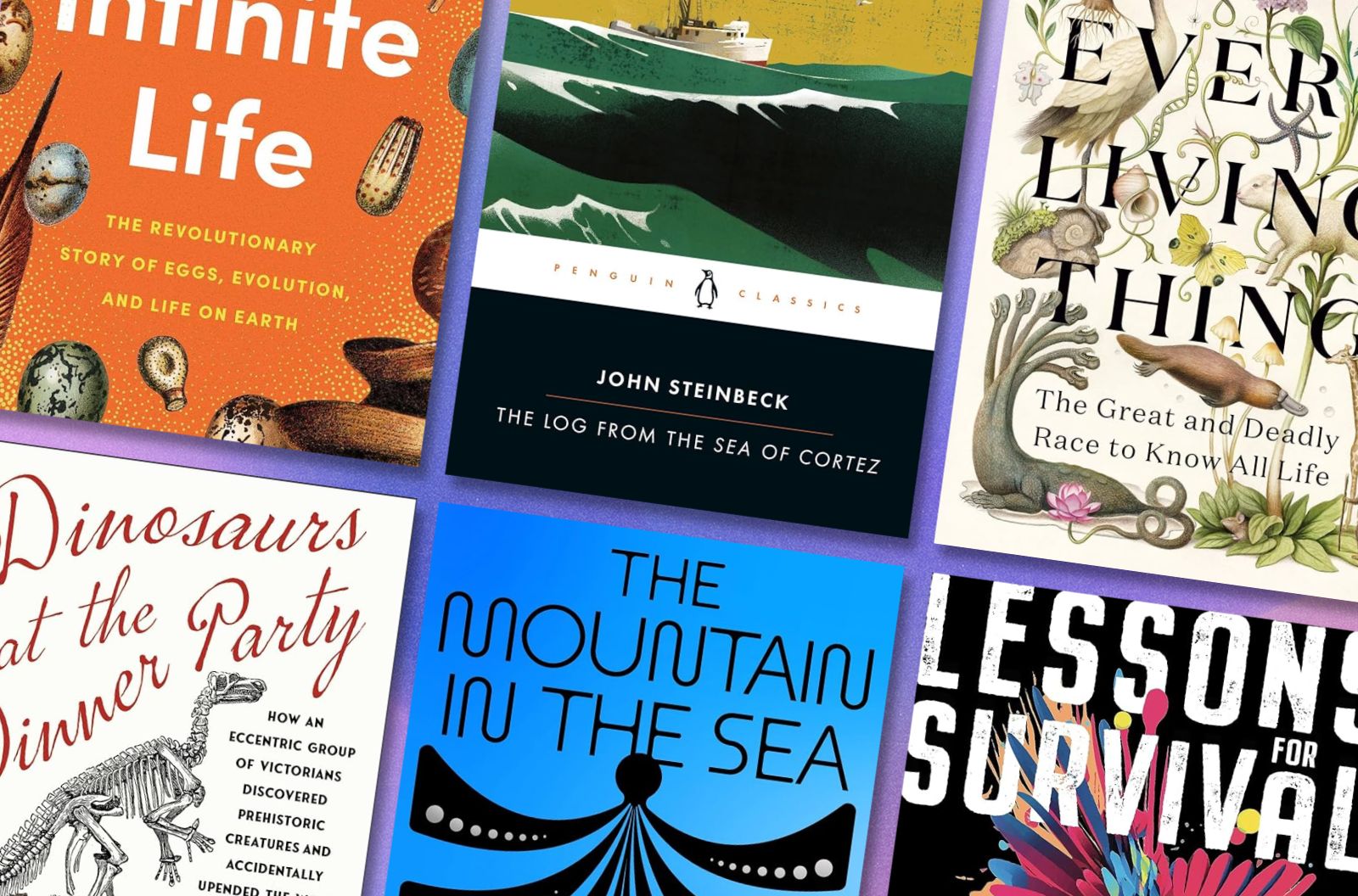
It’s officially summertime, and the season of reading is finally here! Two science writers and voracious readers have compiled their summer reading recommendations, just for Science Friday fans. Before you head out for a week at the beach, start packing for that road trip, or stock up for a long staycation, we’ve got the list of science-y summer reads, straight from those familiar with the best on the shelf.
Joining guest host Diana Plasker to offer listeners their recommendations are Riley Black, a Salt Lake City-based science writer and the author of several books, including The Last Days of the Dinosaurs: An Asteroid, Extinction, and the Beginning of Our World; and Deborah Blum, director of the Knight Science Journalism program at the Massachusetts Institute of Technology and author of several books, including The Poison Squad: One Chemist’s Single-Minded Crusade for Food Safety at the Turn of the Twentieth Century, based in Cambridge, Massachusetts.
When you purchase products through the Bookshop.org links on this page, Science Friday earns a small commission, which helps support our journalism.
Author and director of the Knight Science Journalism program
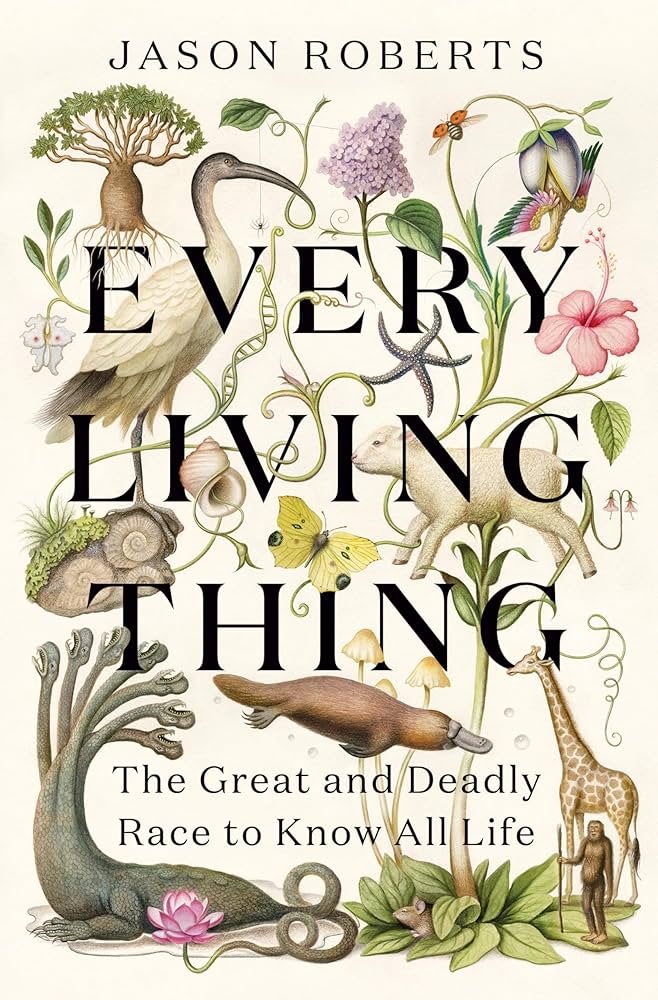 Every Living Thing: The Great and Deadly Race to Know All Life
Every Living Thing: The Great and Deadly Race to Know All Life“A terrific book about Linneaus and Buffon and the history of classifying life, full of human insights, occasional comedy, and some serious race science and social justice issues.”
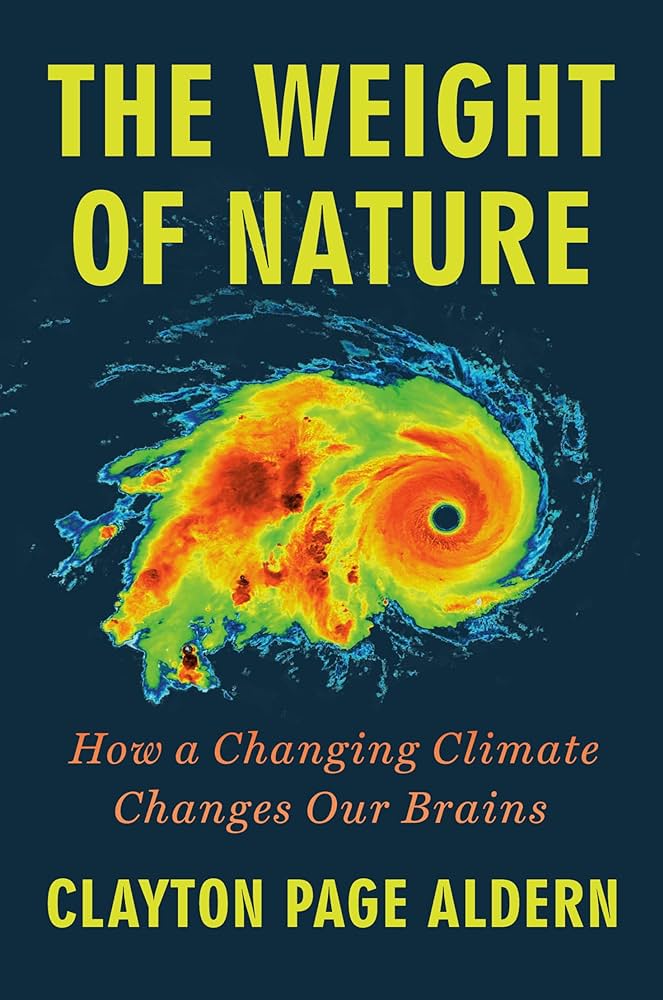 The Weight of Nature: How a Changing Climate Changes Our Brains
The Weight of Nature: How a Changing Climate Changes Our Brains“One of the reasons I like it is because it’s so unexpected. … Beautifully written look at the emotional and physical effects of climate change on the planet, our health, and the way we see the fragility of the world around us.”
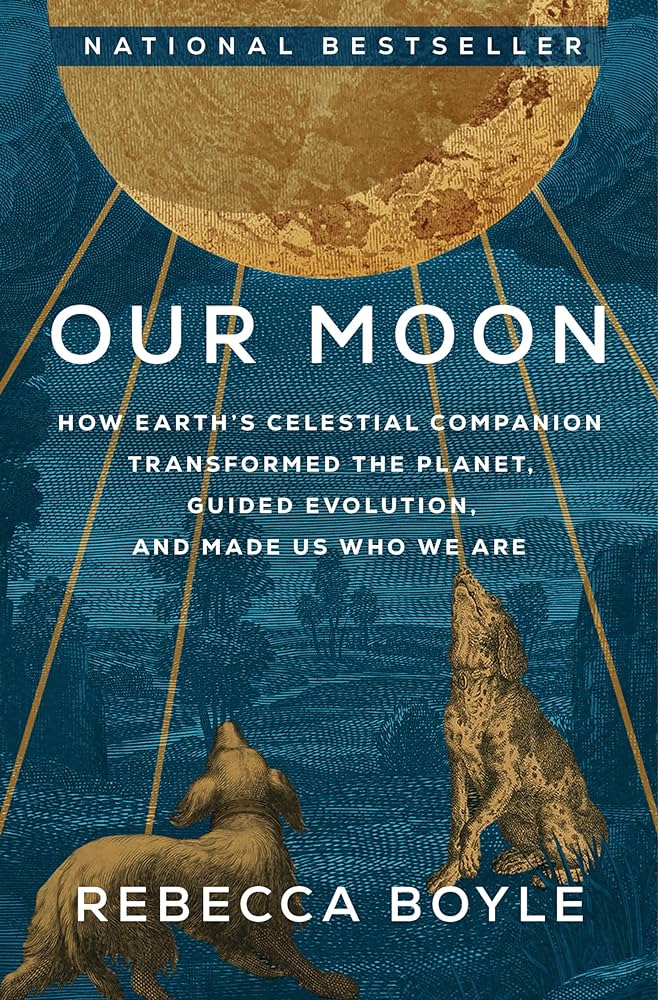 Our Moon: How Earth’s Celestial Companion Transformed the Planet, Guided Evolution, and Made Us Who We Are
Our Moon: How Earth’s Celestial Companion Transformed the Planet, Guided Evolution, and Made Us Who We Are“In which our satellite gets its full due. A book packed with history, science, culture and insight. It will make you want to pull out your home telescope and just admire that big white ball in the night sky.”
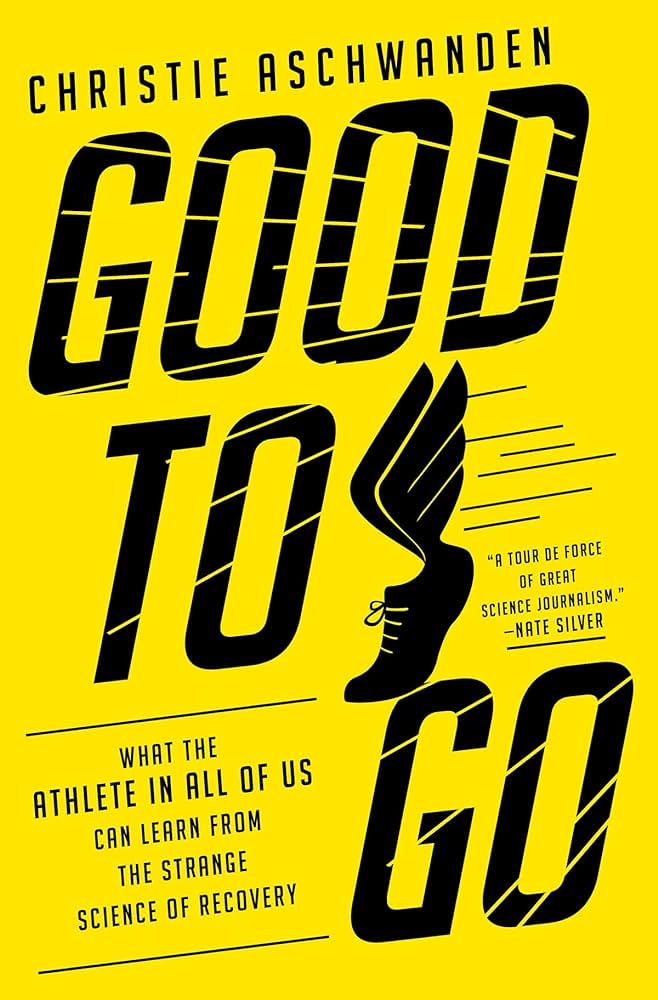 Good to Go: What the Athlete in All of Us Can Learn from the Strange Science of Recovery
Good to Go: What the Athlete in All of Us Can Learn from the Strange Science of Recovery“It’s both about sports, but it’s also about the different ways that sports can stress and injure our bodies, and how we rebuild. It’s really smart … and I say that in spite of the fact that I don’t follow a lot of sports with incredible enthusiasm.”
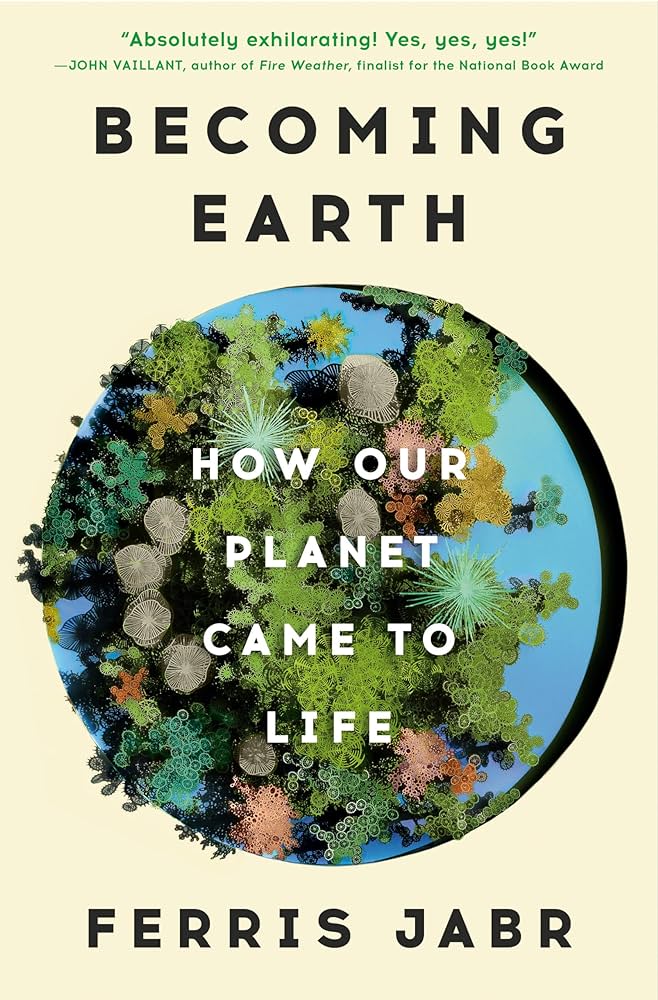 Becoming Earth: How Our Planet Came to Life
Becoming Earth: How Our Planet Came to Life“This exploration of the Earth as a living entity is lyrical, smart, and will make you appreciate the home planet in countless new ways. It’s really a fascinating book.”
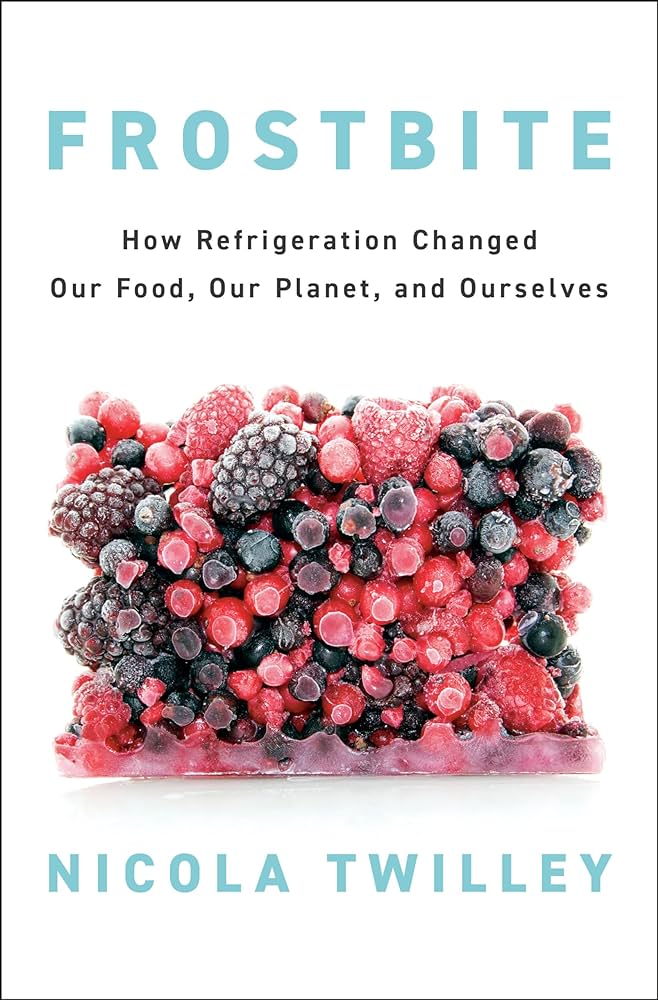 Frostbite: How Refrigeration Changed Our Food, Our Planet, and Ourselves
Frostbite: How Refrigeration Changed Our Food, Our Planet, and Ourselves“Isn’t a book about keeping it cool the perfect summer book?”
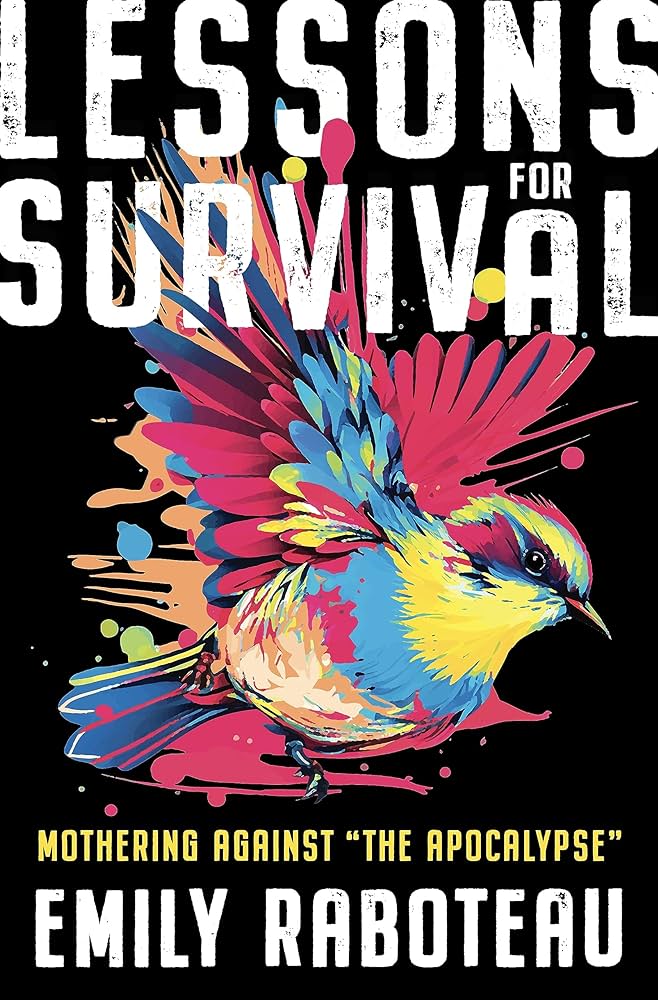 Lessons for Survival: Mothering Against “the Apocalypse”
Lessons for Survival: Mothering Against “the Apocalypse”“A lovely set of essays looking at how we parent in a time of climate change, weaving in urban life, social justice and inequality issues, and how to deal with our shared fears about what comes next.”
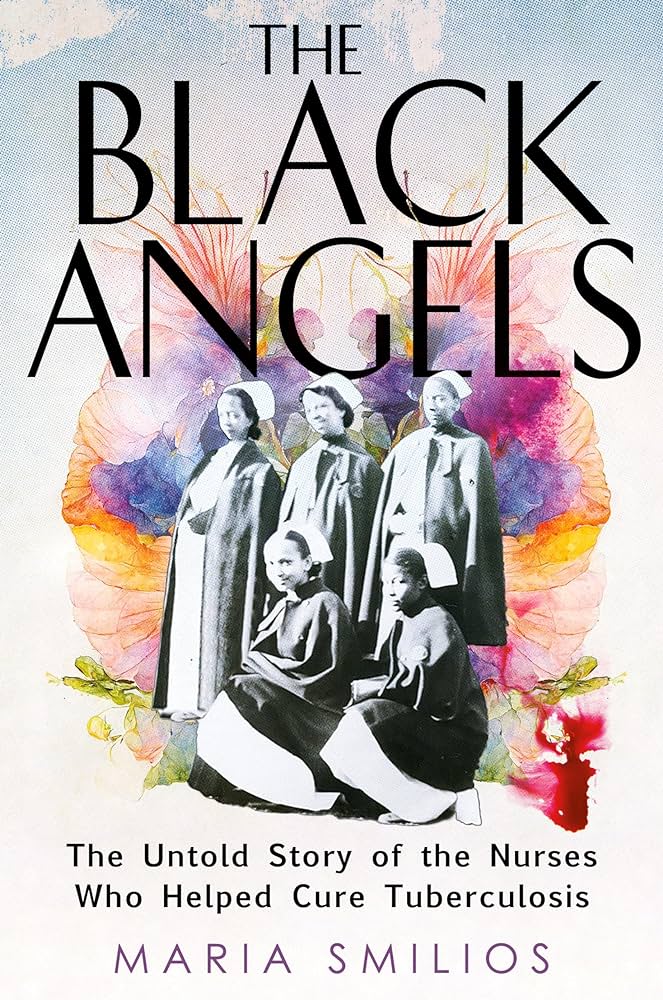 The Black Angels: The Untold Story of the Nurses Who Helped Cure Tuberculosis
The Black Angels: The Untold Story of the Nurses Who Helped Cure Tuberculosis“About the Black nurses who were imported into New York to help fight the tuberculosis epidemic of the early 20th century, and until she wrote this book, had really gotten no credit or no visibility for the heroic work that she did.”
Science writer and the author of several books, including The Last Days of the Dinosaurs
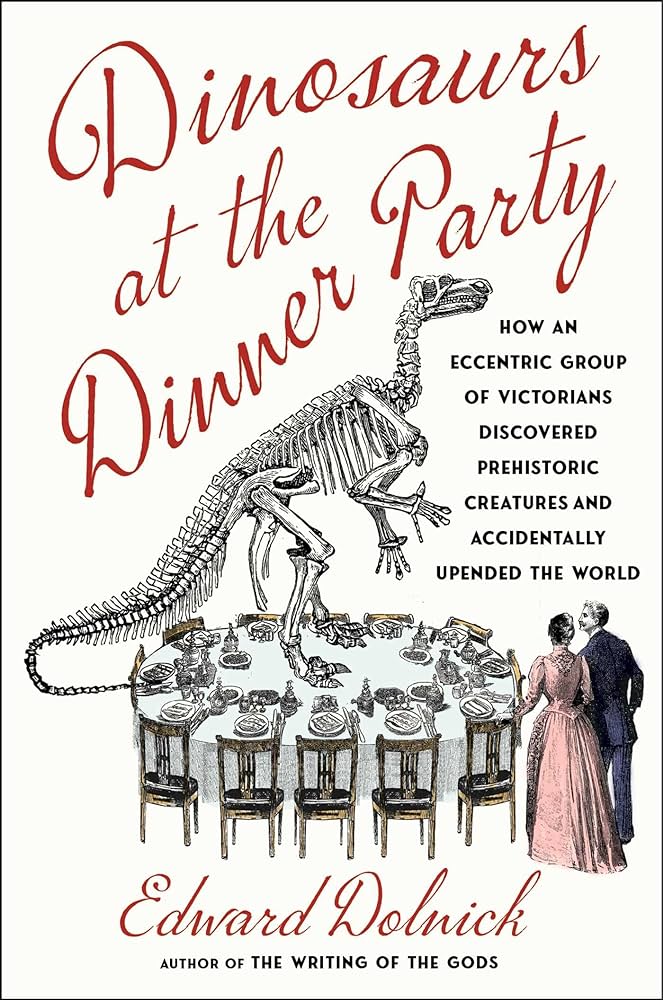 Dinosaurs at the Dinner Party: How an Eccentric Group of Victorians Discovered Prehistoric Creatures and Accidentally Upended the World
Dinosaurs at the Dinner Party: How an Eccentric Group of Victorians Discovered Prehistoric Creatures and Accidentally Upended the World“It got at three major concepts I feel like we often take for granted … life is very, very old, almost incomprehensibly old; extinction is a reality; and evolution is a reality tied to extinction. It’s also cut up and retold in such a way that it’s great for the beach—you can read a chapter or two, jump in the ocean, come back out, pick up where you left off.”
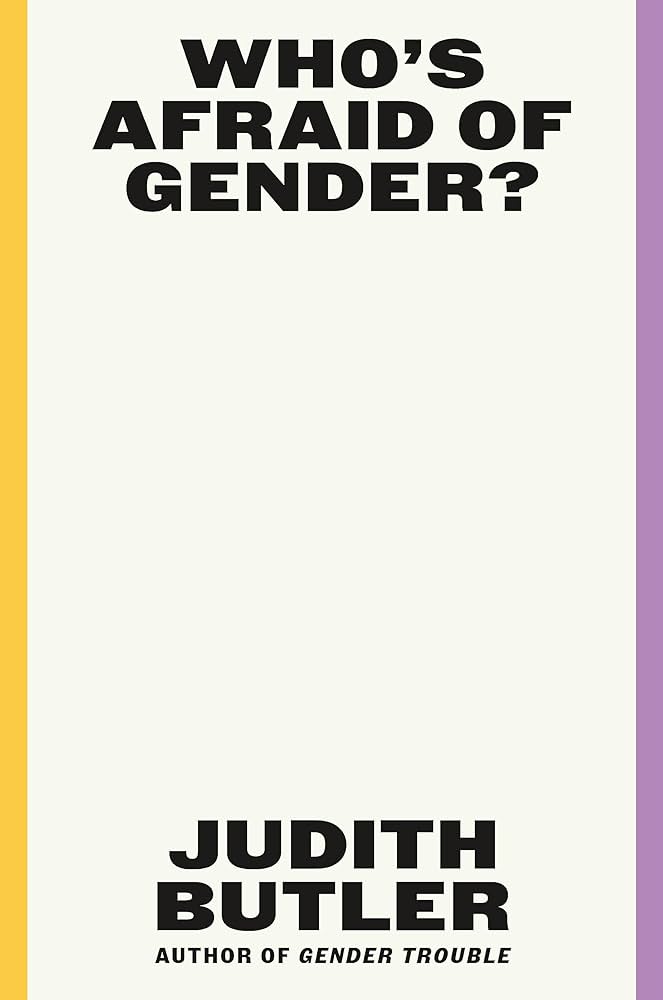 Who’s Afraid of Gender?
Who’s Afraid of Gender? “It’s a philosophy book, but as we well know, we need philosophy in science. It reminds me very much of books [like] Naomi Oreskes’ Merchants of Doubt … where this is happening now, so it’s not even a look back, but an important book for this moment.”
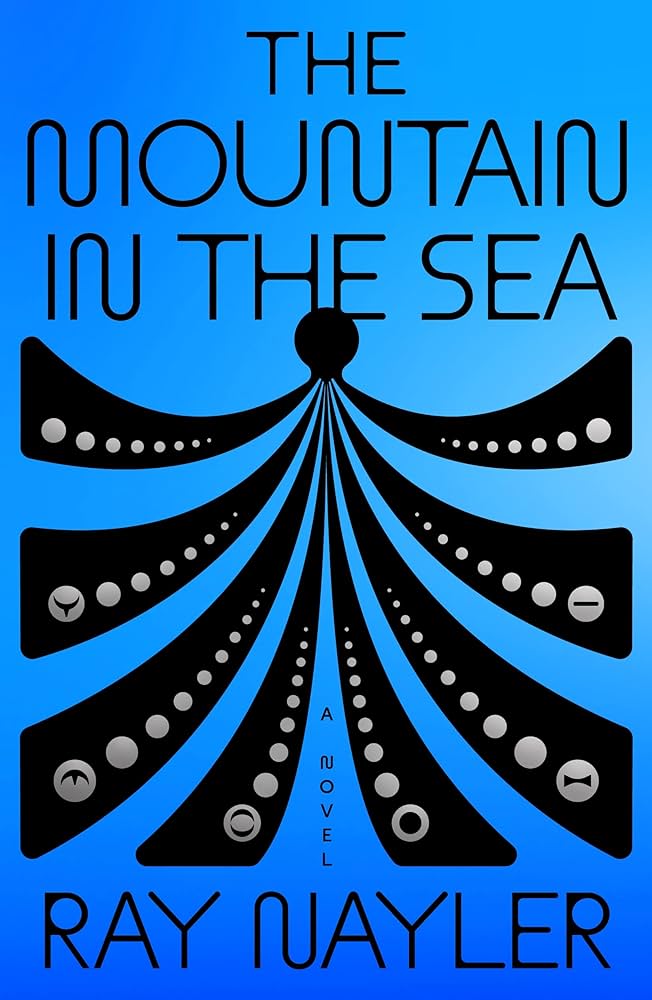 The Mountain in the Sea: A Novel
The Mountain in the Sea: A Novel“Even though it’s about a team of human scientists in this very sci-fi thriller setting, it has some incredibly poignant things to say about how we recognize consciousness, intelligence, and behavior in other species, and our responsibilities in those interactions.”
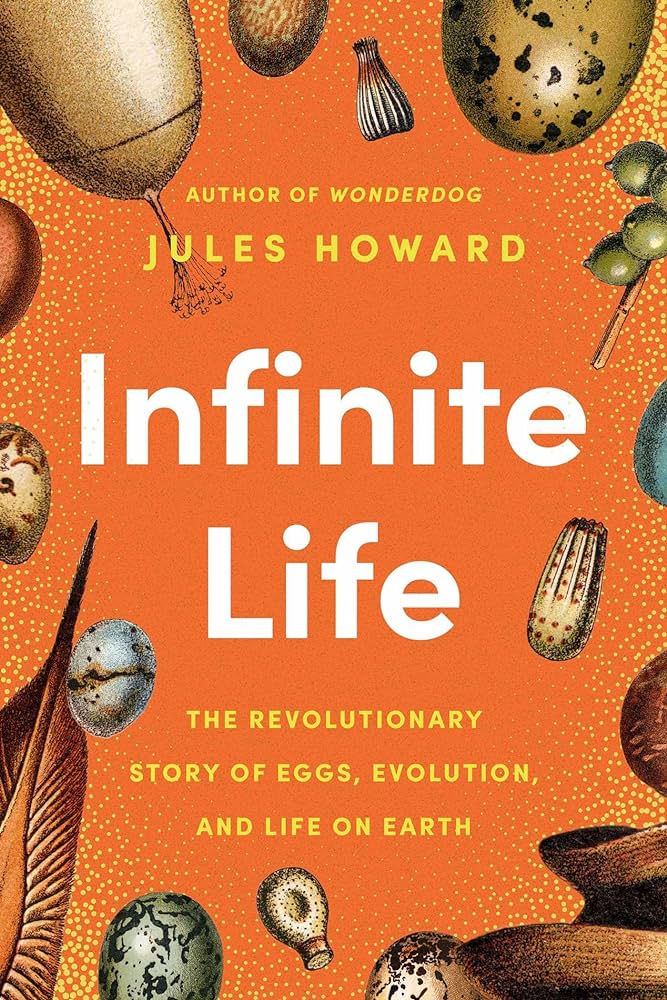 Infinite Life: The Revolutionary Story of Eggs, Evolution, and Life on Earth
Infinite Life: The Revolutionary Story of Eggs, Evolution, and Life on Earth“Jules really questions some of the classic narratives that we have in evolutionary history, like this idea that moving away from water was this triumphant moment for life on land … no, they just were really looking for soft soil to put their egg in to stay moist! It’s a book that really loves its subject and I like the way it combines different ways of storytelling along with some of the latest scientific discoveries.”
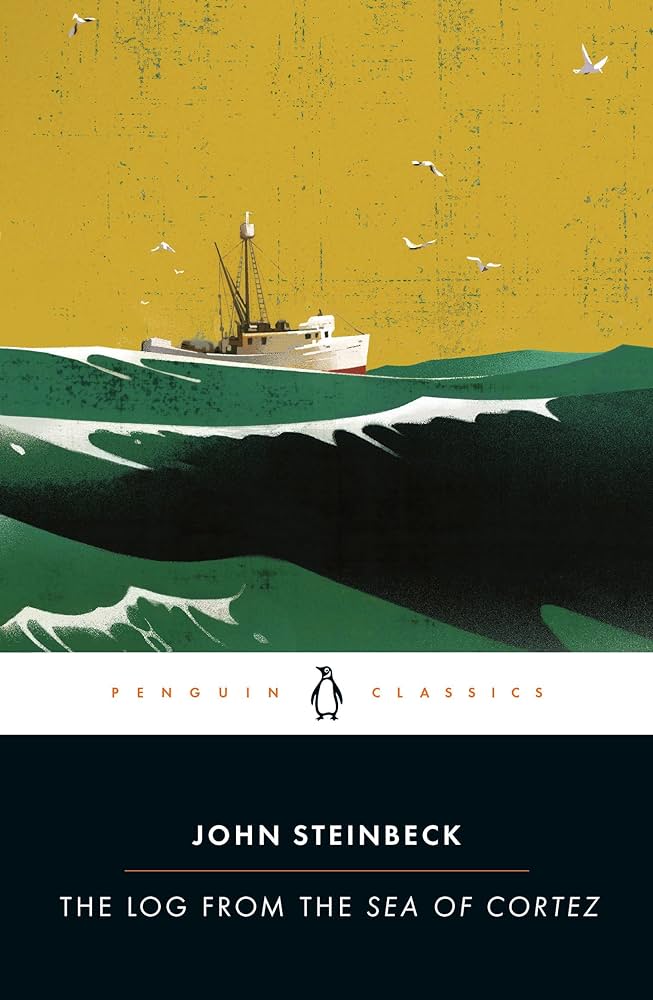 The Log from the Sea of Cortez
The Log from the Sea of Cortez“We don’t have a lot of modern science books quite like this. I love the emphasis on curiosity—you can feel the jargon coming off as it’s proceeding. I feel like that’s so important and so inspiring for me as a writer as well, keeping that curiosity at the forefront—that we’re not trying to shove an encyclopedia at somebody, but relate to these moments of wonder.”
 The Poisoner’s Handbook: Murder and the Birth of Forensic Medicine in Jazz Age New York
The Poisoner’s Handbook: Murder and the Birth of Forensic Medicine in Jazz Age New York“A huge inspiration for me as I was beginning to write. I love that [Deborah] wrote that book and continued to write along those themes. I love books that bring in some narratives and different perspectives, that are not afraid to play a little bit with the unknown.”
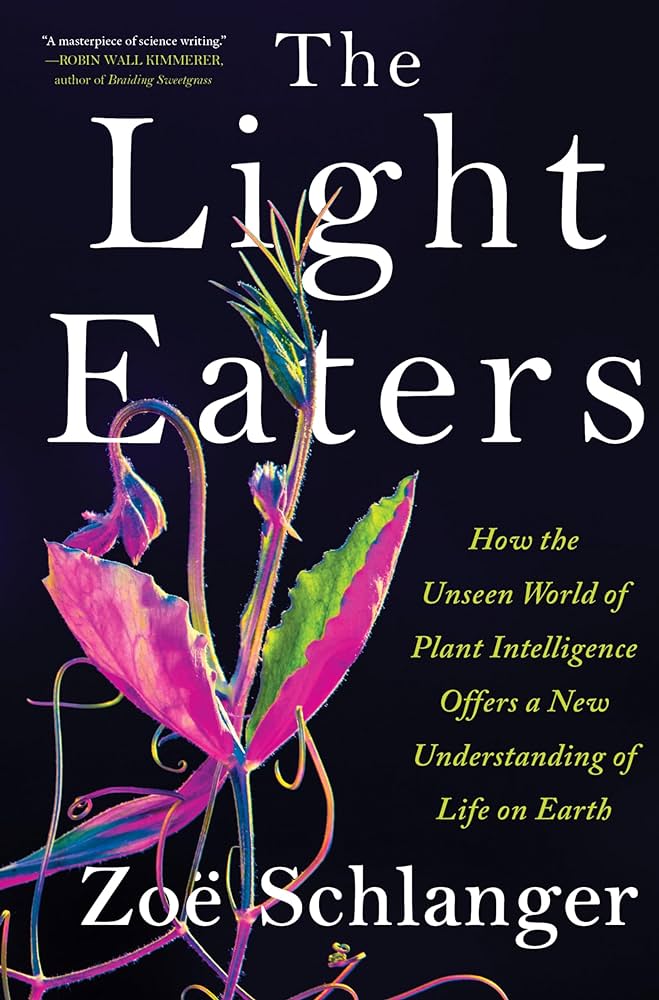 The Light Eaters: How the Unseen World of Plant Intelligence Offers a New Understanding of Life on Earth
The Light Eaters: How the Unseen World of Plant Intelligence Offers a New Understanding of Life on Earth“I just love that this is being asked … now we’ve realized how much [plants] are reacting and perceiving the world about them.”
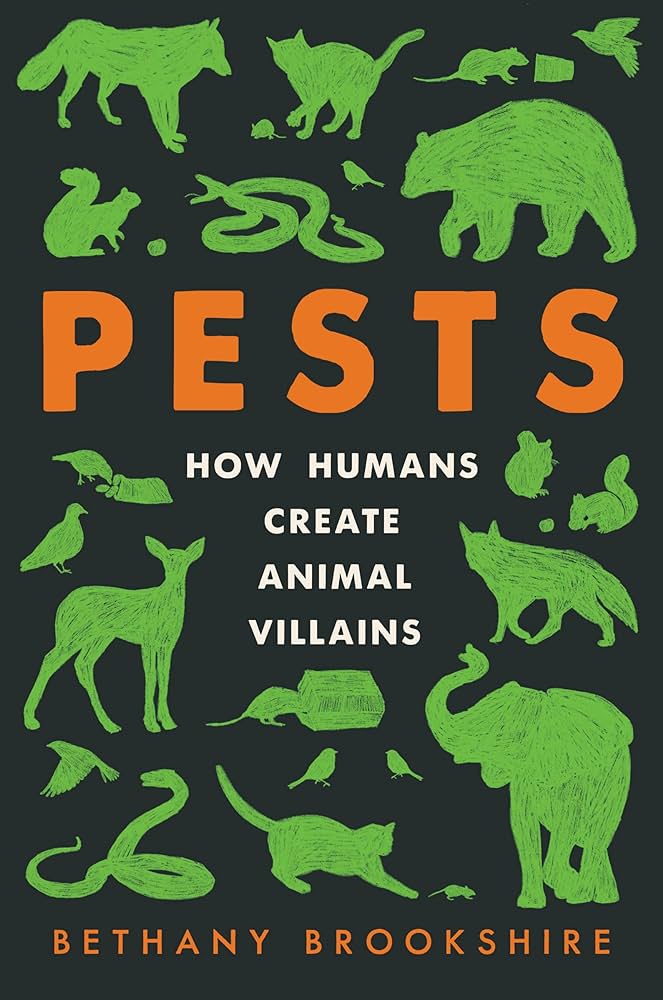 Pests: How Humans Create Animal Villains
Pests: How Humans Create Animal Villains“It’s so lovingly written. I love the exploration of not just, ‘A pest is an animal in the wrong place,’ but, what creates these animal villains? Why do we keep creating these antagonistic relationships with everything from rats to elephants?”
Here are some additional book recommendations from our fans and followers:
Join the SciFri Book Club email newsletter! We send emails a few times per week. If you want to learn more about what we’re reading, you can check out our official Book Club page.
Deborah Blum is a science journalist & author, the publisher of Undark magazine, and the director of the Knight Science Journalism Program at the Massachusetts Institute of Technology in Cambridge, Massachusetts.
Riley Black is a science writer and the author of several books, including When the Earth Was Green, The Last Days of the Dinosaurs, Skeleton Keys and My Beloved Brontosaurus: On the Road with Old Bones, New Science, and Our Favorite Dinosaurs.
IRA FLATOW: This is Science Friday. I’m Ira Flatow.
DIANA PLASKER: And I’m Diana Plasker. It’s officially summertime. The days are long. The hammocks are strung up. And the season of reading is finally here. And if you’re anything like me, you’re looking for some great reads with a science bend to bring along for those lazy beach days in the sun. Well, the shade for me.
We’ve got two science writers and voracious readers joining us today, and they’ve compiled their summer reading recommendations just for Science Friday fans. Plus, we’ll hear from you. Our listeners have sent along their favorites in advance, and some are here to ask our guests for something specific.
So before you head out for a week at the beach, start packing for that road trip, or stock up for a long staycation, we’ve got the best list of sciencey reads straight from those familiar with the best on the shelf.
Riley Black is a science writer and the author of several books, including one of my personal favorites, The Last Days of the Dinosaurs– An Asteroid, Extinction, and the Beginning of our World. She’s based in Salt Lake City, Utah.
And Deborah Blum is the director of the Knight Science Journalism program at the Massachusetts Institute of Technology. She’s also the author of several books, including The Poison Squad– One Chemist’s Single-Minded Crusade for Food Safety at the Turn of the 20th Century. She’s based in Cambridge, Mass. Welcome, both of you, to Science Friday.
RILEY BLACK: Always lovely to be on. Thank you.
DEBORAH BLUM: So glad to be here. Thanks.
DIANA PLASKER: All right, Deb. You have your pulse on the science, journalism, and publishing worlds. Are there science topics that people are drawn to in their book choices these days?
DEBORAH BLUM: Yes. I think a lot of people are trying to figure out climate change as it tends to rewrite our history, rewrite the planet. I think that people just remain fascinated by some of the ways that science makes the world more interesting, more beautiful. People are always drawn to the kind of books that allow you to look at the world in a new way and kind of go, wow.
DIANA PLASKER: Yeah, I find myself drawn to those books basically every time I walk into the library. Riley, do your reading choices vary throughout the years? Do you find yourself drawn to different books in the summer than in the winter?
RILEY BLACK: Oh, entirely. I tend to gravitate more towards narratives or unconventional science books in the summertime. I feel like autumn and winter is more time to do a lot of research and thinking about big questions in science or kind of getting lost in something.
But I like, as it gets warmer, to look for people who are writing science books in ways that we don’t normally see. They are a little outside of the scientist or the journalist who’s going to tell you everything about this particular topic, but looking for alternate ways to get at some of these bigger points or kind of act as a prompt to get out and look at something.
Like, I love how many books there are now that are basically touching moss, right? So it’s like going into the forest and thinking about mushrooms or trees or flowers or things that are accessible and tangible but seem to have their own world. And I know I’m very attracted to those books as things get warmer.
DIANA PLASKER: As a science writer and author, do you have a favorite subject, a favorite science subject that you like writing about?
RILEY BLACK: Well, I feel like that one, I kind of wear it on my sleeve a little bit because I’m kind of the dinosaur lady–
DIANA PLASKER: Literally, yeah.
RILEY BLACK: Right. Yeah, for a number of years now. But I love prehistory in general. I love the prompt that fossils and the past gives us, whether we’re talking about people uncovering it or the organisms themselves, thinking about what was it like to be in that world, either when our ideas were different, or just when the world itself was very different, that it requires some imagination. It requires a buy-in from the reader to really experience where I’m not just telling you this.
It’s kind of like when I go to visit a museum, and I have friends attending with me, and they ask me about a fossil or a skeleton or something like that, and drawing those stories out. And that’s the sort of stuff that I love writing about. So it’s mostly focused on old dead stuff, usually with big scary teeth. But it’s really science that we can bring some imagination to is really what I love writing about.
DIANA PLASKER: Deb, what about you? Are there subject matters that you’re, like, I got it to keep writing about this.
DEBORAH BLUM: Yes. And actually, dead things with big scary teeth are probably a lot nicer than some of the things I write about. So I’m a chemistry and toxicology journalist, and I want to give a shout-out first to chemistry, which a lot of people are afraid of, but is a fundamentally gorgeous science that explains so much about the world we live in. Just– I want to put that out there first.
I tend to write about the evil side of chemistry. So I’ve written about murder, how we catch killers. I’ve written about terrible things that go into our food. I’m currently working on a book about female poisoners and serial killers. So, again–
DIANA PLASKER: That sounds cool.
DEBORAH BLUM: –the dark side of chemistry. It is very cool, actually. But so I’m drawn to those kinds of things. A lot of the books that I read– and going back to summer. I’m like, oh, no. Not another book about a terrible person. And so I will read something by Riley, or I’ll read something about some really cool aspect of science. Or sometimes I read fiction just to get away from all the nonfiction I’m reading every day.
RILEY BLACK: I’m not the first person to make this joke, but in our circles, it’s like, never cross Deborah. Like, this is the one person that, like, if she wanted to disappear you with poison, like, would know every route to do so.
DIANA PLASKER: She’s got the intel.
DEBORAH BLUM: I do. I have a poison ring, and I’m not afraid to use it.
[LAUGHTER]
DIANA PLASKER: Well, with that, Deb, let’s get to a few of your recommendations. Can you give us your top three best science beach reads for this summer?
DEBORAH BLUM: Sure. And I should say none of them are about chemistry, particularly, but– and this is cheating a little. This is a book I reviewed positively for the New York Times, but Every Living Thing by Jason Roberts. It’s a science history book, but it’s about the race to figure out how to classify life on Earth.
And if that sounds boring, he makes it just fascinating and funny and contentious and human, and just also full of issues of social justice– the decisions we make about who matters and who doesn’t matter. It’s really a wonderful book.
And I also like The Weight of Nature– How a Changing Climate is Changing our Brains. This is by Clayton Page Aldern. And one of the reasons I like it is because it’s so unexpected. So many of the books that we read about climate change have to do with the physics of climate change, fire, terrible events. This is just looking about us in a changing planet, and the way we’re responding, and the way our bodies are responding. And it’s gorgeous in the way he writes. I mean, it’s a stunningly, beautifully written book.
And finally, going back to my, let’s actually read about something that’s just beautiful and cool, Rebecca Boyle’s book, Our Moon. It has a long subtitle– How the Earth’s Celestial Companion Transformed the Planet, Guided Evolution, and Made Us Who We Are, which may sound a little grandiose, but she does a really great job of showing how the moon has made our lives more interesting and shaped them in all kinds of ways. So all of those are on my top read list for summer.
DIANA PLASKER: It’s a great book also to read for the summer because it’s warm out and you can look up at the moon.
DEBORAH BLUM: 100% right. And we just had a total solar eclipse involving the moon this year. Just a remarkable reminder of what a celestial world we live in as well. So it really is a great fit for a summer read.
DIANA PLASKER: Riley, let’s go to your top three recommendations for your summer science reading. What do you have?
RILEY BLACK: Sure. So surprising no one, the first one is a dinosaur book of sorts. It’s primarily a history, and it’s Dinosaurs at the Dinner Party by Edward Dolnick. And at first glance, I thought this was going to be a book that we’ve heard these stories before. It was set in 19th-century England, talking about the origins of paleontology as a science.
But it’s more than that. And it got at three things, or three major concepts, I feel like we often take for granted, but if you think about them in the context of their time are entirely mind-blowing. And that is that life is very, very old, almost incomprehensibly old, that extinction is a reality, and evolution is also a reality tied to extinction– these other concepts that life has been changing, taking new forms over immense time periods and how we came to understand that.
And it’s kind of wild to look back and think we were driving species to extinction before we recognized extinction as a concept within Western society. And this book really gets at that. It takes this particular event, this peculiar moment that’s often almost like a joke in paleontology, this 1853 dinner.
We have all these anatomists and scientists having dinner inside an Iguanodon model on New Year’s Eve and saying like, how did we get there? How did this ridiculous moment kind of become a symbol from these serious scientific questions?
And it’s also kind of cut up and retold in such a way that it’s great for the beach, that you can read a chapter or two, jump in the ocean, come back out, pick up where you left off. And it doesn’t require too much intense concentration on all these threads.
The second one– it’s my kind of off-speed pitch for this one– but it’s Who’s Afraid of Gender? By Judith Butler. And it’s a philosophy book. But, as we well know, we need philosophy in science. And this is something that affects me very much.
When I was reading it, number one, I wanted to highlight almost every single line and realized that wouldn’t be useful to run the highlighter over an entire book. But it is that poignant and I think, important in this moment, where particularly, as you can guess, I have a vested interest in this as a transgender woman seeing headlines constantly and people who normally deny science starting to talk about the importance of science, of sex and gender and all this stuff that’s kind of bizarre.
And Butler’s book really puts it into perspective. Like, why now? Where is this manufactured controversy coming from, how it preys upon the misconceptions that we might hold about the relationship between sex, gender, or expectations about these things.
So I feel like it reminds me very much of books that Naomi Oreskes would write, like Merchants of Doubt and things like that, where this is happening now. So it’s not even a look back, but I think an important book for this moment.
And then the third is actually a science fiction book. But I love the way that it talks about intelligence. And it’s Ray Naylor’s The Mountain in the Sea. And I Science Friday loves cephalopods as well. You just had your lovely cephalopod week.
DIANA PLASKER: And it was great, as always.
RILEY BLACK: Yes. I mean, I always make sure I catch like everything you all are doing for that one because they’re just– they’re fascinating. They’re wonderful. But recognizing the intelligence of these organisms, and in this scientific setting, really giving space to think about what would it be like to experience the world as a cephalopod, to be able to communicate through colors, changes, and textures and things like that.
So even though it’s about a team of human scientists in this sort of very sci-fi thriller sort of setting, I feel like it has some incredibly poignant things to say about how we recognize consciousness and intelligence and behavior in other species and our responsibility in those interactions. When we start to recognize these things in other species, how do we interact with them when we don’t share a common language? And it’s just a lovely book that I think makes a great read to take to the water side and think about what’s living in there.
DIANA PLASKER: Yeah, I love that. That was another one of my favorites from last year as well. So I’m glad you mentioned it.
A quick note– this conversation was recorded in front of a live Zoom audience. For more information about how to join a future live stream, head to sciencefriday.com/livestream.
IRA FLATOW: Stay with us. We’ll be right back with more of our favorite summer science books.
DIANA PLASKER: This is Science Friday. I’m Diana Plasker, with a best list of summer reading recommendations just for Science Friday fans. We have a suggestion from one of our listeners, Barbara in Chattanooga, Tennessee, who said they recommend Crossings– How Road Ecology is Shaping the Future of our Planet by Ben Goldfarb. And they said, “This is such an eye-opening, important book. You’ll never look at a road the same way.” This was actually another one of my favorites from last year. Deb, Riley, did either of you get a chance to read this one?
DEBORAH BLUM: Yes, and I love that book. And Ben Goldfarb’s a wonderful writer and journalist. And the way he makes you look at the connections between urban development and nature and the way we’ve reshaped the lives of animals around us is so important and fascinating.
And, you know, just thinking– putting yourself in the place of animals whose total migration paths are disrupted by our roads and watching the ways we’re starting to get smarter about that. And what I guess I want to say about that book is I think it’s a hopeful book because it’s not just, look what we’ve screwed up. It’s also look what we’re doing to make this better– all the tunnels and bridges and different passages that we’re starting to put in. I could not agree more. It’s a wonderful book.
RILEY BLACK: I haven’t read it yet, but now I’m going to have to. This sounds fantastic.
DEBORAH BLUM: You have to, Riley.
RILEY BLACK: Yes. It makes me think of being in Yellowstone, seeing the bison who used the roads and things like that– how much we’ve changed the world around us through our roadways. So yeah, sign me up for that one.
DIANA PLASKER: We do have an anonymous question from one of our Zoom listeners who says, “Do you have any recommendations for sports science books?” What do you think? Sports science books? I know there’s science and sports, but do you have any book recommendations?
DEBORAH BLUM: I was going to say this is not obviously my area of expertise, but– and this is not an incredibly recent book. But I highly recommend Christie Aschwanden’s book, Good to Go, which is a sports book that looks at the science of recovery, in particular. So it’s both about sports, but it’s also about the different things that– ways that sports can stress and injure our bodies and how we rebuild.
It’s really smart. It’s a terrific– I mean, I sound like a cheerleader here, but it really is a terrific book. And I say that in spite of the fact that I don’t follow a lot of sports with incredible enthusiasm– outing myself. And so the fact that I still found this book fascinating speaks, I think, to how good it is.
DIANA PLASKER: I’m also not a big sports person, so we’ll leave that one. Thanks, Deb, for your recommendation for that listener.
Well, let’s keep going with your recommendations. You sent me a list, and we’ve got a few more on that list. Riley, would you mind telling us a few more of those titles?
RILEY BLACK: Sure. So this one is not out until very early September, but very useful for that end of summer, days are getting a little shorter time is Infinite Life by Jules Howard. And it’s about the biology and evolutionary history of eggs.
And we have a lot of these single-subject science books. But what I really love about Jules’s approach for this is taking a little bit of narrative, taking a little bit of fiction informed by science and paleontology, and kind of using that to set the scene, and then bringing the reader out into some of our latest discoveries about eggs in these evolutionary moments in which they change.
So it’s one of the books that they go sort of into the distant past, the very origins of what an egg is, and then go up through time, through the Devonian and the Triassic and Jurassic, all the way to the relative present and unpacking how our personal connection to eggs and where we come from. But also, all these unexpected sort of twists and turns along the way.
And I appreciate that Jules really questions some of the classic narratives that we have in evolutionary history, this idea that moving away from the water was this almost like triumphant moment for life on land– our lizard-like ancestors amongst the proto-mammals.
And now it’s like, no, they just really were looking for soft soil to put their eggs in to stay moist. It wasn’t some great big move-out moment where they said goodbye to the water forever. So I feel like it’s a book that really loves its subject. And I like the way that it combines some different ways of storytelling, along with some of the latest scientific discoveries.
DIANA PLASKER: Amazing. Deb, what about you? Can you give us another really great science summer title?
DEBORAH BLUM: Sure. And moving forward, like Riley did, I wanted to give a shout-out to a couple of books that actually just came out today on the 25th, which I was lucky enough to read early. One of them is Becoming Earth by Ferris Jabr, which looks at the Earth as a living entity.
And it’s in the wonder of science category. It will make you almost feel the breath of the planet and think about the amazing way that the Earth reshapes itself. It’s just really a fascinating book.
And the other one that also comes out today is Frostbite– How Refrigeration Changed Our Food, Our Planet, and Ourselves, on this theme of everything changing us and everything around us. But it’s by Nicola Twilly, who is on that podcast Gastropod.
And it is about, if you think about it, just the way the fact that we can keep things cold– food, ourselves, drink changes everything– changes everything about the way we live. And she goes into deep freezes and food delivery places.
So it’s smart, and it’s fun. And also, it really strikes me, especially since we’ve just been through a heat wave in Boston, that a book about cold is the perfect summer book.
DIANA PLASKER: It really is. Yeah, that sounds like a great one.
DEBORAH BLUM: It’s a lot of fun.
RILEY BLACK: Just to throw another one in there. This is a much older book. It’s approaching 100 years old now. But one of my favorites to read in the summertime is John Steinbeck’s The Log from the Sea of Cortez for a couple of reasons.
One is that we don’t have a whole lot of modern science books quite like this. I feel like often we’re very concerned about balancing the latest discoveries with semi-autobiographical approach in a lot of books. But this is really– it is a journal– really is kind of a log talking about this journey down Baja, California, through the Sea of Cortez and what these researchers so many decades ago experienced.
And I love its emphasis on curiosity, that you can feel the jargon coming off as it’s preceding this one particular encounter. When we stop talking about– we’re looking at the invertebrates of the littoral zone or whatever. They’re just like, we’re curious what lives here. We’re just– we’d like to see– have you anything neat lately, and just finding those moments of connection.
And I feel like that is so important and so inspiring for me, as a writer, as well, keeping that curiosity at the forefront, that we’re not trying to shove an encyclopedia at somebody but relate to these moments of wonder and even just questions. Even if we can’t find the answers, but just the fact that we’re asking these questions. And I really love the book for that reason. It’s a great sort of science adventure book.
DIANA PLASKER: We’ve got a question from one of our listeners here. Rebecca from Austin, Texas, has a question just about the concept of science books. Go ahead, Rebecca.
AUDIENCE: When I was filling out my list of favorite science books, I started thinking, are they going to reject this? Like Ian McEwan’s Machines Like Me, or Clara and the Sun about artificial intelligence a little bit, and Memory Place. I think it’s amazing. But anyway, I’m new to the Science Friday book club and just trying to clearly understand what’s acceptable for a science book.
DIANA PLASKER: Great question, Rebecca. Go ahead, Deb.
DEBORAH BLUM: I was going to say to me, science is everything. I mean, it’s something that we actually try to make journalists see. Every single story has a science part of it if you’re willing to look for it. And I think we should be sort of open-hearted and generous in what we think about is a good science book or a good science story.
Briefly, Ian McEwan’s book, Enduring Love, the main character in that is a science writer. And it’s a really wonderful book in all kinds of ways. And one of the conundrums it poses is actually the title. When we say enduring love, do we mean love endures, or love is something that we have to endure?
And I love Ian McEwan, actually. He’s a wonderful writer. And the way he explores those kind of complicated, ethical issues is one of his strengths, and I think is also important in the way we think about science.
DIANA PLASKER: Riley, what about you?
RILEY BLACK: I mean, it’s hard to edit something that was said so perfectly. But I was going to mention Deborah’s book, The Poisoner’s Handbook, which was a huge inspiration for me as I was beginning to write some of my books as well.
DEBORAH BLUM: Blush, blush.
RILEY BLACK: I know. I swear I’m not a ringer. This is enthusiasm. But I love that in so many of the scenes that you set, it feels like you’re in the room with some of these investigators or people who had found a body and trying to work this out. And just like, I remember flipping through being like, how are they going to figure this out?
And I love that you wrote that book and continued to write, along those themes. I love books that bring in some narratives and different perspectives, who are not afraid to play a little bit with the unknown or curiosity or just even emotion, that this is not just about distilling what we know down in a news you can use package. Those books are everywhere, and they’re important, and they’re great.
But I think in this particular moment in science books and writing, I love seeing people who are kind of breaking out of formats a little bit, who are telling stories in different ways. And I’m not trying to pat myself on the back with it, but in The Last Days of the Dinosaurs, I wrote it as a narrative, trying to put the reader there in the prehistoric past.
And I was so worried when this book was finished that everybody was going to say, well, this is like fiction. How can you possibly know any of this? This is not science. And the exact opposite happened in its reception.
And I want to see more of that from my peers and colleagues and other writers. And there will always be a place for books that give you a crash course on a subject that you always wanted to know about– an organ system, an ecology, a concept or something like that.
But I love when someone clearly has a passion and can envision what it is that they’re talking about, and you feel it come through the page. I have a very cinematic kind of imagination. So when that clicks, I love science books that do that.
DIANA PLASKER: We have time for a few more recommendations. Deb, we haven’t gotten to your whole list. So do you want to tell us about a few more summer science books for our listeners?
DEBORAH BLUM: Yes. This is another book that is related to climate change, which just came out this spring, and that is Lessons for Survival by Emily Raboteau. It’s a collection of essays. And it’s based around the idea of here I am a parent in what feels like a perilous time, as it does to all of us in the age of climate change. And so how do I parent well?
And as she does this, she looks at issues of climate change and temperature and wildlife and social justice. And so she weaves together our lessons in survival are not just about climate change, but how we try to do our best in this very complicated– speaking of science being everything– world that we live in. And it’s just a really emotionally powerful book. I really enjoyed reading it and also the ways that it made me think.
And really quickly, if I have a minute, I also wanted to recommend The Black Angels, Maria Smilios’s book, about the Black nurses who were imported into New York to help fight the tuberculosis epidemic of the early 20th century, and until she did this book had really gotten no credit or no visibility for the heroic work that she did, which brings me back to Riley’s point about narrative writers.
I’ve always thought that narrative writers and their ability to put you in the moment, take you there, make you part of that story– we rescue stories that have been lost. They were not interesting to someone else. They vanished into history because they didn’t catch the imagination, or they were something flat.
But a narrative writer can take a story that’s lost and bring it to modern, roaring life. And this book does that. And I think it actually is one of the most important things that we do sometimes as narrative writers. We rescue history. We don’t let it disappear. We make it breathe right on the page.
DIANA PLASKER: Thank you. I love that. And I agree. I am finding myself drawn to these narrative books more and more. And thank you for writing them, Riley and Deb. I mean, they’re great.
Riley, I think we’re missing a few of your recommendations as well. Do you want to tell us your last recommendations for summer science books?
RILEY BLACK: Sure. One of the ones I’ve really just started, but I love it so far, and I love the questions asking. It’s The Light Eaters, basically about plants, and questions involving what do plants really sense or perceive, and this question of consciousness in plants.
And even though I don’t think that part of it can really be answered, and the author, Zoe, she puts it in context by the conclusion, from what I understand. I just love that this is being asked, this is being explored, that there was this opening up decades ago when they told you to play music for your plants, talk to your plants, things like that. And there was a lot of pushback against it because a plant’s just a plant. It just goes towards the light, and that’s generally what it does.
And now we’ve realized how much they are reacting and perceiving the world around them. And I feel like it’s one of those books that I love just the enthusiasm with which that question is being asked.
And I didn’t initially put it on my list. It’s by a friend of mine, so you can take it with a grain of salt, but Bethany Brookshire’s Pests. I think it’s so lovingly written. It’s so much work clearly on the page.
But I love the exploration of just not like a pest as an animal in the wrong place, but just like, what creates these animal bones? And why do we keep creating basically our own problems in these antagonistic relationships with everything from rats to elephants?
And how do we learn to live with these animals that we’ve inadvertently basically selected to live with, that we’ve decided– we’ve made them villains and decided to live with them. And it’s just a very thoughtful and curious exploration of that idea.
DIANA PLASKER: Before we wrap up, I want to put us all in the reader’s shoes for a second. Imagine they go to their local bookstore and can’t find any of your recommendations in stock, but they don’t want to leave empty-handed. What advice would you give to them in finding a high-quality, readable, science-focused book for the summer? Deb, what do you think?
DEBORAH BLUM: I mean, a lot of times I’ll just look for the staff recommendations when I’m in a bookstore. And indie bookstores especially– not to diss the non-indie bookstores. But indie bookstores are great about putting books forward and writing little summaries about what they are. And so some of my favorite browsing is just reading through staff recommendations.
Usually there’s dedicated science sections, and you can find some of that there. But that or just asking at the bookstore are two of my favorite ways to figure things out sometimes.
RILEY BLACK: Absolutely. Yeah, I think looking at the staff recommendations, especially indies, talking to who’s working there and stuff, because they will be able to probably respond to what kind of book you’re looking for. Because it’s not just subject area. It’s like, do you want something that’s more narrative? Do you want to learn everything there is to know about this particular topic?
And I think that intent is part of what will help you achieve your goals. Even if you just go straight to the science and nature section, and you’re saying, I’m looking for a book to read in my hammock, on my couch, on vacation, whatever else. And once you have that context in mind, I feel like things jump out a little bit more in terms of what’s going to catch your curiosity.
DIANA PLASKER: That’s all the time we have today. Thanks to our Zoom audience for your fabulous questions and suggestions. And thank you to my guests, Riley Black, a science writer and the author of The Last Days of the Dinosaurs and many others, and Deborah Blum, Director of the Knight Science Journalism Program and the author of several books, including The Poison Squad. Thank you both so much for being here.
RILEY BLACK: Oh, it’s lovely to join. Thank you.
DEBORAH BLUM: Thank you so much.
DIANA PLASKER: And if you happen to not be taking notes and need a list of the titles mentioned by our guests today, we’ve got you covered. Go to our website, sciencefriday.com/summerbooks to find all the books mentioned in today’s conversation, plus a few extra we didn’t have time to talk about today. That’s sciencefriday.com/summerbooks.
Copyright © 2024 Science Friday Initiative. All rights reserved. Science Friday transcripts are produced on a tight deadline by 3Play Media. Fidelity to the original aired/published audio or video file might vary, and text might be updated or amended in the future. For the authoritative record of Science Friday’s programming, please visit the original aired/published recording. For terms of use and more information, visit our policies pages at http://www.sciencefriday.com/about/policies/
Diana Plasker was the Senior Manager of Experiences at Science Friday, where she created live events, programs and partnerships to delight and engage audiences in the world of science.
Dee Peterschmidt is a producer, host of the podcast Universe of Art, and composes music for Science Friday’s podcasts. Their D&D character is a clumsy bard named Chip Chap Chopman.